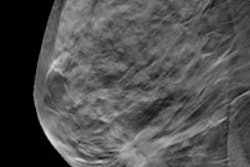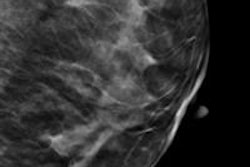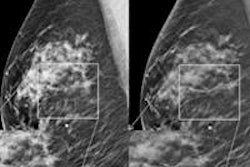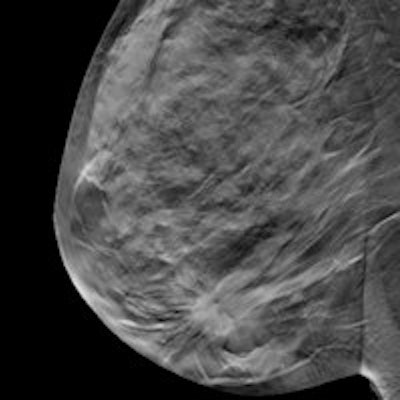
The benefits of digital breast tomosynthesis (DBT) have received a lot of press coverage, but what is less well-known is how women feel about the modality. Norwegian researchers discovered that women receiving DBT didn't find it to be more painful than standard mammography, nor were they concerned about its radiation health effects.
 Randi Gullien, a senior radiographer from Oslo University Hospital in Norway, found women's experiences of digital breast tomosynthesis to be comparable with standard mammography.
Randi Gullien, a senior radiographer from Oslo University Hospital in Norway, found women's experiences of digital breast tomosynthesis to be comparable with standard mammography.
From September to December 2012, 4,609 women ages 50-69 attended a population-based screening program in Norway. The women were asked if they'd like to participate in the Oslo Tomosynthesis Screening Trial (OTST), which included craniocaudal and mediolateral oblique tomosynthesis views along with standard 2D mammography.
All of the women -- both participants in OTST and nonparticipants -- were asked to fill out a questionnaire after their screening exams, according to Randi Gullien, a senior radiographer at Oslo University Hospital who presented the questionnaire's findings at ECR 2014 in Vienna.
All told, 2,888 women (after exclusions) voluntarily answered the questionnaire, which included questions about their concern over radiation health effects and pain experience. Of the women who responded, 521 received 2D mammography only.
Gullien and colleagues found that 75% of the women who had 2D mammography plus DBT were not concerned about radiation effects.
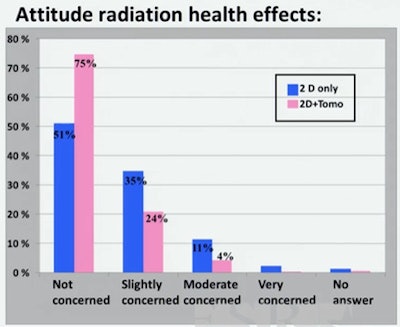 Other results regarding the attitude of radiation effects. All images courtesy of Randi Gullien.
Other results regarding the attitude of radiation effects. All images courtesy of Randi Gullien."There was no significant difference in level of education, self-assessment of knowledge of radiation, or previous history of mammography between the groups," Gullien emphasized. However, the women who participated in the DBT arm knew about tomosynthesis -- 33% responded "yes" when asked if they'd heard about tomosynthesis in the DBT arm versus 25.5% in the standard mammography arm.
Regarding pain, those in the DBT group reported similar experiences to those receiving standard mammography, which is to say, most felt a bit of pain (42% versus 44%).
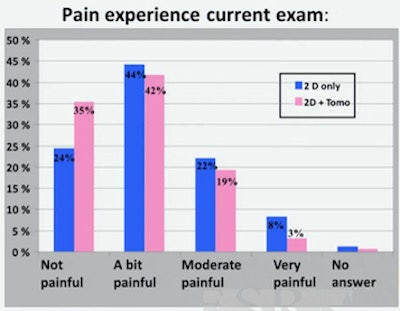 Most of the women found DBT to feel similar or even slightly less painful than standard mammography.
Most of the women found DBT to feel similar or even slightly less painful than standard mammography.The women also reported that they thought the exam time of 2D mammography plus DBT was comparable with the exam time for 2D mammography alone (90.7%), although 2D mammography plus DBT took slightly longer.
"We made no modifications or adjustments to the compression force even though the compression time for 2D plus tomosynthesis was a few seconds longer than for 2D only," Gullien told AuntMinnieEurope.com. "We worked just as usual."
During her ECR 2014 presentation, she said the majority of women who chose tomosynthesis in addition to standard mammography had a low level of anxiety for adverse radiation health effects.
"They didn't find 2D plus tomosynthesis more painful or time-consuming than standard 2D mammograms," she concluded.
Study disclosures
Hologic, a DBT vendor, paid for Gullien's travel costs in 2012 and provided financial support for Gullien's co-authors.





